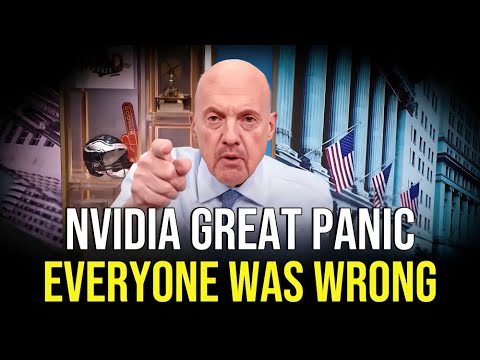In the video, Jim Cramer discusses Nvidia’s potential impact on the semiconductor industry following CEO Jensen Huang’s visit to Beijing, likening it to a pivotal moment in U.S.-China relations. He highlights the strong demand for AI chips, particularly from TSMC, while expressing concerns about Microsoft’s position in the AI race and the risks posed by export controls and trade tensions affecting Nvidia’s business.
In the video, Jim Cramer discusses Nvidia’s recent developments and its implications for the semiconductor industry, particularly in light of CEO Jensen Huang’s trip to Beijing. Cramer expresses his admiration for Nvidia and its leadership but raises concerns about the unpredictable nature of U.S.-China relations and the semiconductor market. He likens Huang’s visit to a “Nixon to China” moment, suggesting that it could have significant ramifications, although the outcome remains uncertain.
Cramer highlights the strong performance of Taiwan Semiconductor Manufacturing Company (TSMC), which reported impressive earnings and maintained a positive growth outlook despite external pressures, including tariffs. He notes that TSMC is essentially “sold out” for leading-edge wafers through 2025, indicating robust demand for AI chips. This demand is crucial for companies like Nvidia, which are positioned at the forefront of the AI chip market.
The discussion shifts to Microsoft, with Cramer suggesting that the tech giant is falling behind in the AI arms race. He acknowledges that Microsoft is investing heavily in AI, but questions its commitment and strategy, particularly regarding its plans in Ohio. Cramer implies that other companies, like OpenAI, are better positioned to leverage Nvidia’s high-end chips, potentially leaving Microsoft at a disadvantage.
Patrick Moorhead, a guest analyst, joins the conversation to provide insights on TSMC’s performance and its implications for the broader tech industry. He emphasizes TSMC’s impressive margins and the potential for competition from companies like Intel and Samsung. Moorhead warns that tariffs and economic downturns could pose significant risks to TSMC and its customers, including Nvidia.
Finally, the video addresses the impact of export controls on Nvidia, which recently faced a $5.5 billion hit due to these regulations. Cramer and Moorhead discuss the potential consequences of escalating trade tensions, particularly for Nvidia’s business in China. They conclude that while Nvidia remains a strong player in the market, investors should be cautious and consider the volatility and risks associated with the semiconductor sector as it navigates these challenges.
